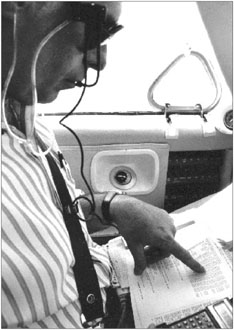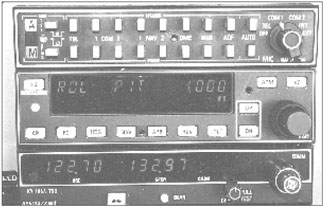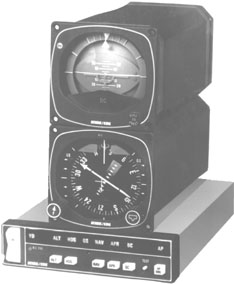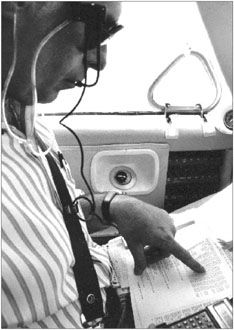
By Paul Bertorelli
When the first so-called automated cockpit appeared in airliners more than a decade ago, the concept had what could generously be called a few bugs. This gave rise to a cynical joke about the three stages of autopilot awareness. Stage 1: Hey, whats this thing doing? Stage 2: Hey, whys it doing that? Stage 3: Oh, it does that.
With human adaptability a crucial survival skill, it was more expedient for pilots to adjust to the autopilots foibles than it was to chase down the gremlins hiding in the software. Fortunately, light aircraft autopilots havent yet become so sophisticated that they render the pilot a mere systems manager, but if you work at it, you can make it so.
As even little airplanes become richer with complex avionics, autopilots have evolved from the nice-to-have to the essential were-not-going without it. And that raises the inevitable moral dilemma for anyone flying serious single-pilot IFR: Is autopilot dependence a bad thing? If your autopilot is broken, should you cancel the trip or revert to an airline ticket? As with all things related to safety-of-flight judgments, theres no pat answer. But theres a strong argument to be made that you need some means of defending yourself against your autopilot.
Autopilot Addiction
A couple of years ago, I was sitting in the right seat of a Bonanza, giving a pilot I knew to be a strong stick a routine instrument proficiency check. He flies IFR frequently, knows the airplane well and isnt afraid of serious weather. Hes also a born-again adherent to the systems manager approach to single-pilot IFR, a fact that was immediately obvious when he clicked on heading hold and vertical speed before we reached the end of the departure runway.
Wait a minute, I thought to myself, am I checking out the autopilot or diagnosing this guys skills? For a typical IPC, I have the pilot warm up with some turns to headings and rate and airspeed climbs. This will immediately reveal any weaknesses in the pilots scan. Although he protested, I had my friend knock the autopilot offline for this series of exercises.
This revealed something that may be true for many of us who rely on autopilots too much or for those of us who dont fly often: His scan was terrible. We shot through headings by 30 degrees or more and our altitude trace looked like an elevation view of the Cyclone at Coney Island. Beads of sweat popped up on his forehead and after five minutes of this, he succinctly summed up the obvious with this observation: Boy, I really suck. And so he did.
But like the skinny runt struggling to escape from a body sheathed in fat, my friends inner IFR pilot found its way to the surface. In under 15 minutes, his scan settled down and he accurately nailed headings and altitudes to ATP standards. We did some partial panel exercises and approaches, which he mastered without strain.
Im sure most instructors have seen this phenomenon in varying degrees, although not all pilots who use the autopilot for everything but taxiing to the runway are susceptible to it. The only way to know if your autopilot is propping up weak skills is to fly without it in a deliberate, organized way, either in IMC or in training. You dont need a CFII for this, either. Unless youre buried in self-denial, you can readily evaluate your own skills.
Two Schools
Autopilot attitudes seem to sort into two broad schools of thought, call them the Pragmatists and the Luddites. The Pragmatists accept that the autopilot is an integrated part of the airplane, that understanding how it works and using it regularly is an essential skill that enhances flight safety and that failures of autoflight systems are rare and shouldnt be a factor in deciding how, when or whether to use it.
A Pragmatist will tend toward coupling an approach rather than hand flying it because not doing so is tantamount to intentionally flying without an attitude gyro or an airspeed indicator or any other system the airplane is equipped with. Why do that?
Luddites, on the other hand, are mildly distrustful of autopilots, expect them to fail and have established an arms length relationship with their use. Luddites tend to be skeptical of performance claims for high-end avionics and are more likely to hand fly departures and arrivals. A Luddite will rarely, if ever, give up an approach to the coupler.
In the real world, I suspect that pilots drift in and out of both camps or pick and choose certain elements of each to suit the situation. Although the Pragmatists are correct, by predilection and experience, I am a confirmed Luddite. Flying about 150 hours a year, Im happy to let the autopilot handle the drone work of straight-and-level cruising but Im not about to give up even a single approach to the coupler, unless its for refresher training or to see if the thing still works and that I know how to use it. I prefer to hand fly because for me, thats part of the satisfaction of being a competent IFR pilot and I accept the minor additional risk of not flying coupled approaches.

Use All Youve Got
Earlier this year, our sister publication Aviation Consumer published a report evaluating the new WAAS approaches, which will provide vertical guidance on approaches to nearly every airport in the country. Although the safety enhancement of vertical guidance is inarguable, the magazine observed that it might not be worth the $10,000 upgrade price for those who are likely to fly only one or two such approaches a year.
An airline pilot wrote to point out the flawed logic in this conclusion. His view was that the fewer approaches you fly, the more you need every possible safety enhancement available, presumably to buttress skills weakened by too few hours in the air or too little experience with the type of approach being flown.
This is the absolute safety argument: In all decisions related to flight safety, youre safer if you use everything youve got in the way of equipment, ATC assistance and so on. In other words, it makes no sense to hold back on using any equipment in the airplane. In his view, the $10,000 WAAS upgrade price is chump change that any owner should be able to afford, given the potential safety benefit of vertical guidance on all approaches.
We can disagree about the cost/value equation of spending that much for a WAAS upgrade; value is in the eye of the beholder and flying light aircraft as a means of practical transportation is not always all about safety at any cost. Its reasonable to accept some risk in exchange for some benefit and if that benefit happens to be the satisfaction of hand flying a non-precision approach behind a steam-gauge panel, so be it.
Nonetheless, the airline pilots logic applies to autopilot use. No matter how skilled you are or how often you fly, youll never be able to fly an approach as well as your approach coupler can. It will nail the localizer and glideslope every time and if its working correctly, it will never have a bad day. When the weather is well and truly hugging the earth, a perfectly flown ILS is vastly preferable to one thats a dot left of center and two dots high on the glideslope.
Further, on a complex departure with obstacles looming in the clag, an autopilot married to a capable navigator such as a Garmin GNS430 or 530, can fly a critical departure far more accurately than any human can, assuming it has been set up correctly. In hand flying a departure, youll have to jump start your scan and engage your cold brain to accomplish a number of complex tasks that have to be done just right in a short period of time. Yet, hidden in that very challenge is the argument for not using the autopilot.
Balance The Risk
The usual anti-autopilot Luddite argument is that if the thing fails, youre screwed and you ought to be ready for that. And while autopilots and the systems that drive them do fail, thats not the compelling reason to hold them at arms length. Its a question of engagement and overall competence.
When you took your IFR checkride, you were deemed competent if you could perform all the tasks in the Practical Test Standards. The PTS contains a lot of noise unrelated to the real world but the core of it is the meat-and-potatoes of IFR: precise aircraft control by reference to instruments. On your checkride, flying by hand, you could hold headings and altitudes, climb and descend at specified rates and handle the radio, all while rifling through your approach plate booklet for the NDB Runway 31 into Cow Plop Muni.
Two hundred or 2000 hours later, can you still do that? If you cant and you accept that the autopilot will do the heavy lifting for you, do you still consider yourself a competent IFR pilot? If the answer is yes, the assessment is yours to make. Theres an obvious risk in having a poor or mediocre scan but the larger risk is not knowing it. And if you dont know that, what else dont you know? If a vacuum pump fails or a servo runs amok-hardly rare events-youre at risk if your basic competence is wanting. And even if you dont encounter a failure, are you engaged enough with basic flight tasks to be truly competent?
Monitoring an autopilot as a routine way of IFR flying invites a level of disengagement from the IFR process. Two-pilot crews might be able to afford this luxury because even if one pilot has drifted out of the loop, chances are someone is still home in the other seat. Challenge-and-response technique helps prevent this.
Its not the same for single-pilot IFR. You can devise clever single-pilot CRM schemes but the truth is, even if the autopilot is performing perfectly, you may not be fully engaged enough with the flightplan to expect the next turn or the level-off at the altitude you scrolled into the pre-select. Or will you be chatting with the passengers to an extent that youre more one of them than a pilot?
The Luddite, on the other hand, is sweating his way down the approach course trying to keep the needles centered. He has undeniably introduced an element of risk because on his best day, he cant match the approach couplers performance and he has to break off some mental bandwidth to handle the radios and the charts.
In exchange for that short term risk, the longer term benefit will be a better scan and full engagement with the process of flying IFR. Hell know what comes next because he has to do what comes next. He has, in short, forced himself into the loop by choice. Its harder work, yes, but the reward is the satisfaction of skills honed to a sharper edge.

Whos Right?
So whos got the lock on the better way to fly, the Pragmatists or the Luddites? Neither and both. Pilots who rely heavily on autopilots are also certain to suffer erosion of basic scanning skills, some more than others.But they can guard against this by making a point of flying without the autopilot occasionally or even frequently. This can be done in the training scenario, as I did with my friend in the Bonanza, or during the course of routine trips.
It can be done periodically in various phases of flight, say a departure for one trip, an approach for the next.
If your scan has tanked and you cant hold a heading while thumbing for a chart, youll know it. And you dont need us to tell you what to do about it.Luddites-myself included-can benefit from running drills on the higher autopilot functions, such as course capture, approach coupling, vertical speed control and routine ground pre-flight checks. All that capability is there for the asking and its silly not to use it from time to time, even for those of us to whom the satisfaction of hand flying an ILS to dead nuts minimums represents the reason we became Instrument pilots in the first place.
Also With This Article
“Autopilots And Backups”
-Paul Bertorelli is editor of Aviation Consumer magazine and Aviation Safetys editorial director.




